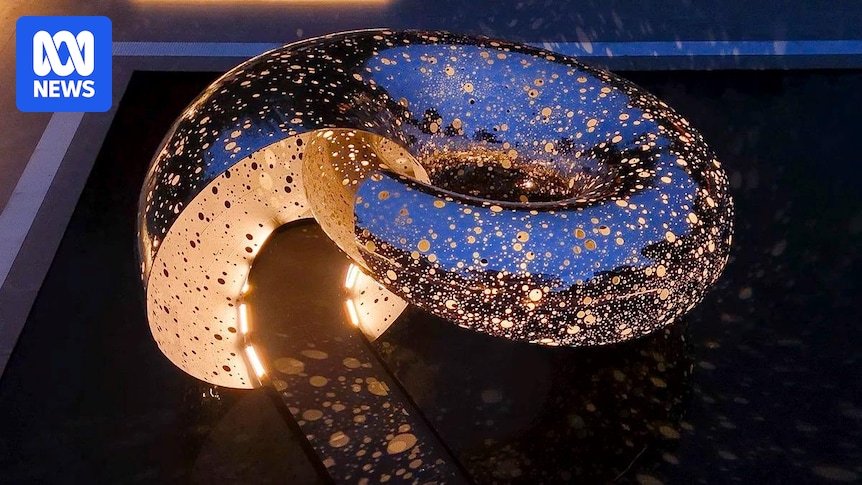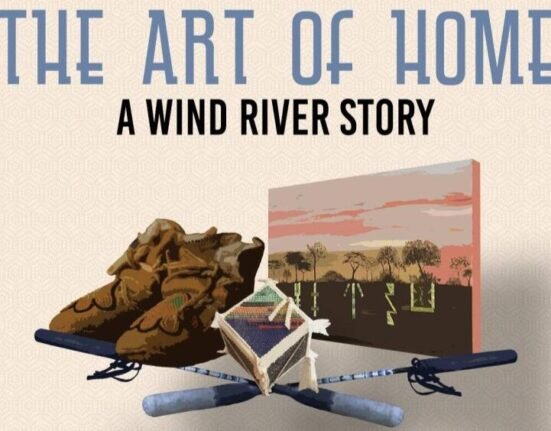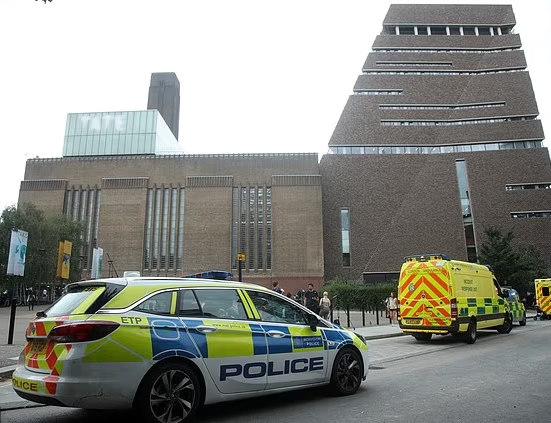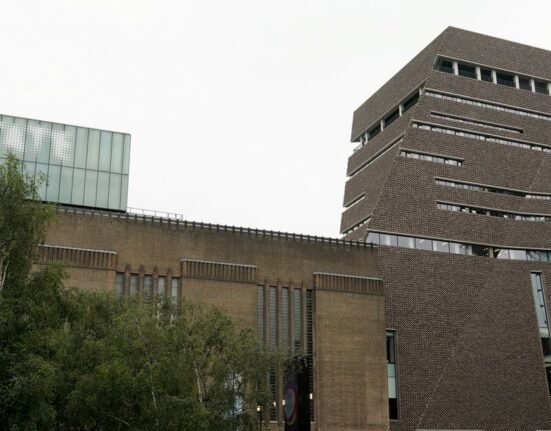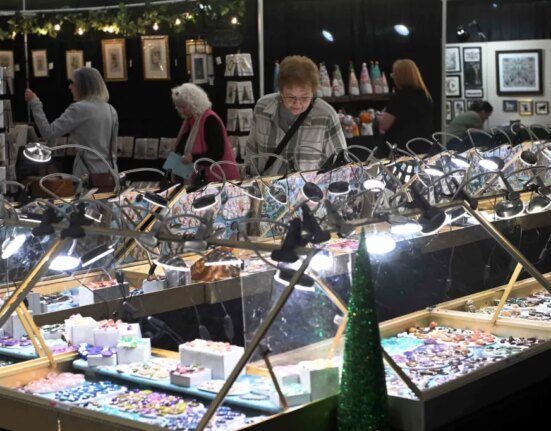The National Gallery of Australia’s (NGA) newest — and single most expensive — piece of artwork has been unveiled in Canberra.
Ouroboros’s journey as a piece of public art may be only beginning, but it’s taken four years and 60,000 hours of work by 200 skilled workers, as well as a mammoth journey across three states, to get the 13-tonne and $14 million sculpture to the national capital.
Lindy Lee’s masterpiece, based on the ancient tale of the same name about a snake swallowing its own tail, has now come to rest in the forecourt of the gallery in a pond, surrounded by a native garden.
It’s been built to last for at least 500 years, and the NGA hopes it will become an iconic piece of artwork to draw visitors to Canberra.
Interactive piece of art invites visitors inside
Visitors will be able enter the Ouroboros’ ‘mouth’ and walk into the curved space in darkness illuminated by light beams from the thousands of perforations on its surface. (Supplied: Martin Ollman)
At around nine metres long and 4.5 metres high, Ouroboros is large enough for visitors to go inside — and that’s exactly what the artist envisioned.
Visitors will be able enter the Ouroboros’s “mouth” and walk into the curved space to experience darkness that is illuminated by light beams emanating from 45,000 holes in its surface.
The earliest known depiction of an Ouroboros, a symbol of eternal return and cycles of birth, death, and renewal, is found in the tomb of King Tutankhamun and dates back to the 14th century BC.
Artist Lindy Lee says she chose to design the sculpture after an Ouroboros to create a work that was “really inclusive”. (Supplied: NGA/Karleen Minney/ACM)
In devising Ouroboros, Lee said she was drawn to the snake as a creature that has been mythologised by multiple cultures and as a result, symbolises connection.
She said she hoped when people saw the sculpture, particularly when they went inside it, they would experience a “deep connection to something which is much larger than just this little, individual body” — what she described as “cosmos”.
“[I hope it helps people feel] that we are a part of this greatness, we’re intrinsic to it as much as this greatness is intrinsic to us,” Lee said.
“I actually want people to really feel that in their hearts and their souls.”
It took four years to work on Ouroboros in a Brisbane foundry. (Supplied: National Gallery of Australia)
Lee, and many other pairs of hands, worked on Ouroboros for four years in a Brisbane foundry, and getting it from Brisbane to Canberra on the back of a truck took almost a week.
Looking at in place, Lee said she loved the way the mirror-polished stainless steel received the “reflections of life” during the day, and appeared to be lit up itself at night.
As part of the years-long process, she worked closely with Ngunnawal elder Aunty Jude Barlow, and in an “unbelievable coincidence” discovered the importance of the snake to Ngunnawal heritage.
There are 45,000 hand cut holes in the sculpture that emit beams of light in all dierctions at night. (Supplied: Martin Ollman)
Up to the public to judge value, gallery director says
Director of the National Galley of Australia Nick Mitzevich said he believed the piece had been worth the price tag, especially when the amount of work and time which had gone into it was taken into account.
But he said it was now up to the public to judge its value.
National Gallery of Australia Director Nick Mitzevich hopes future generations of visitors will enjoy Ouroboros long after its creators and purchasers are gone. (Supplied: National Gallery of Australia)
“We’ve been very careful in the commissioning. We’ve ensured that we’ve strived for value for money,” Dr Mitzevich said.
“It’s such a great attraction … it’s tantalising, it’s curious, it’s seductive.”
The funds for the work came from the NGA’s collection development fund, which is provided annually by the federal government exclusively for artworks and acquisitions.
He hoped many future generations of Canberrans, and visitors, would enjoy Ouroboros, after its creators and purchasers were long gone.
The sculpture is open to the public 24 hours a day, seven days a week.
Ouroboros is on display in a pond in the the forecourt of the National Gallery of Australia. (Supplied: National Gallery of Australia)

